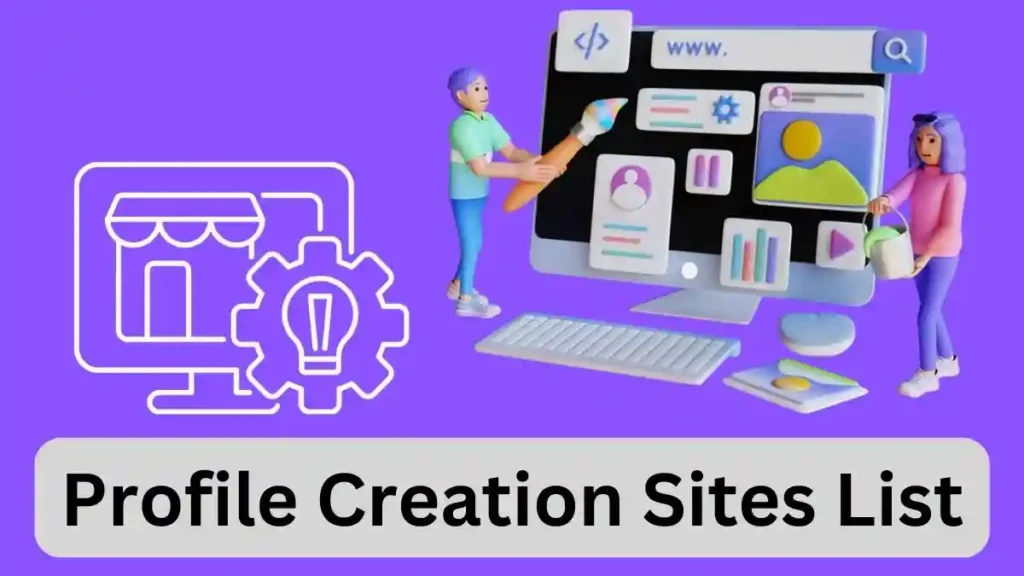Social media marketing strategy is the most powerful lever for business growth in today’s digital landscape. With over 5.24 billion active social media users representing over 64 percent of the world’s population, social media has become the most addressable channel in marketing. However, having a presence is not enough. Successful businesses use strategic, data-driven approaches to transform social media followers into engaged customers and loyal brand advocates. When executed properly, social media marketing strategy can increase brand awareness, drive website traffic, generate leads, and directly boost sales revenue.
In this comprehensive guide, we explore everything about social media marketing strategy: what it is, why it matters, proven strategies that drive results, how to build an effective plan, best practices, tools, and how to measure success in 2025.
Table of Contents
What is Social Media Marketing Strategy?
Social media marketing strategy is a comprehensive plan that defines how your business will use social media platforms to achieve specific marketing and business objectives. Rather than randomly posting content, strategic social media marketing aligns every action with clear goals including increased brand awareness, website traffic, lead generation, customer engagement, and revenue growth.
A well-developed social media marketing strategy includes target audience definition, platform selection, content planning, posting schedules, engagement tactics, paid advertising approaches, and continuous measurement and optimization based on performance data.
The fundamental difference between successful and unsuccessful social media efforts is strategy. Businesses that carefully plan their social media approach and continuously optimize based on results see 376 percent higher success rates than those without clear strategy.
Why Social Media Marketing Strategy Matters in 2025
The role of social media in business has transformed dramatically. Statistics show that 59 percent of businesses are now making more sales directly through social media marketing. Additionally, 63 percent of Gen Z discover products or brands on social media at least weekly, proving social platforms are critical discovery and purchase channels.
Key reasons social media marketing strategy is essential today:
- Social ad spend is projected to reach 276.7 billion dollars globally in 2025, demonstrating massive investment in this channel
- 80 percent of consumers expect brands to respond on social media within 24 hours
- User-generated content increases conversion rates by up to 30 percent
- Video content drives 93 percent of purchase decisions
- Social media marketing provides instant feedback and measurable impact compared to traditional marketing
- Brands can reach targeted audiences with precision using social platform tools
- Community engagement builds trust that increases customer retention significantly
Core Elements of Effective Social Media Marketing Strategy
| Element | Description | Business Impact |
|---|---|---|
| Clear Goal Definition | Specific, measurable objectives aligned with business outcomes | Keeps efforts focused and enables success measurement |
| Audience Understanding | Deep knowledge of target demographics, behaviors, and preferences | Content resonates more effectively increasing engagement |
| Platform Selection | Choosing platforms where target audience is most active | Maximizes reach and engagement with right people |
| Content Strategy | Consistent themes, formats, and posting schedule | Builds audience expectations and maintains engagement |
| Community Engagement | Responding to comments, messages, and user-generated content | Builds relationships and increases brand loyalty |
| Paid Advertising | Strategic use of platform advertising tools for amplification | Expands reach and drives conversions faster |
| Analytics and Measurement | Tracking performance metrics and optimizing based on data | Improves ROI and identifies winning strategies |
| Influencer Collaboration | Partnering with influencers aligned with brand values | Reaches new audiences through trusted voices |
Master Social Media Marketing Strategy
Learn proven strategies to build engaged communities and drive consistent sales growth.
Step-by-Step Guide to Building Your Social Media Marketing Strategy
Step 1: Define Your Goals and KPIs
Before creating any content, clearly define what you want to achieve with social media marketing strategy. Common goals include increasing brand awareness, driving website traffic, generating leads, boosting sales, building community, and improving customer support.
For each goal, establish Key Performance Indicators (KPIs) you will track. Examples include follower growth, engagement rate, click-through rate, conversion rate, and revenue attributed to social channels.
Step 2: Understand Your Target Audience Deeply
Research your ideal customer including demographics (age, location, income, education), behaviors (what they do online, content preferences), pain points (problems they face), and motivations (what drives their purchasing decisions).
Create detailed buyer personas representing different segments. The more specific your audience understanding, the better you can tailor content that resonates and converts.
Step 3: Choose the Right Social Media Platforms
You do not need to be on every platform. Instead, focus on platforms where your target audience is most active. Different platforms serve different purposes and attract different demographics:
- LinkedIn: B2B marketing, professional content, thought leadership
- Instagram: Visual content, lifestyle brands, younger demographics, e-commerce
- TikTok: Short-form video, Gen Z audiences, creative content, trends
- Facebook: Broad demographics, community building, detailed targeting options
- Twitter: Real-time engagement, news, B2B conversations
- YouTube: Long-form video, tutorials, product demos, educational content
- Pinterest: Visual discovery, DIY, fashion, home decor, inspiration
Step 4: Create a Content Strategy and Calendar
Develop content pillars representing 3 to 5 recurring themes aligned with your goals and audience interests. Examples include educational content, entertaining content, user-generated content, promotional content, and thought leadership.
Plan content at least one month in advance using a content calendar. Schedule posts during peak engagement times when your audience is most active. Maintain consistency while staying flexible enough to engage with trending topics and conversations.
Step 5: Create Engaging Content
Content is the engine that powers social media marketing. Focus on creating content that provides genuine value through education, entertainment, inspiration, or problem-solving. Use visual-first approaches including photos and videos which outperform text significantly.
Encourage two-way interaction by asking questions, running polls, featuring audience content, and responding personally to comments and messages. Build relationships rather than broadcasting one-way messages.
Step 6: Implement Paid Advertising Strategy
Combine organic content with strategic paid advertising. Use platform advertising tools like Facebook Ads, Instagram Ads, LinkedIn Ads, and others to amplify reach and drive conversions. Target specific audiences based on demographics, interests, behaviors, and previous website visitors.
Step 7: Measure and Optimize
Continuously track performance metrics using platform analytics and third-party tools. Analyze what content performs best, when your audience is most active, and which campaigns drive conversions. Optimize based on insights by doubling down on winning strategies and testing new approaches.
Top Social Media Marketing Strategies for 2025
Short-Form Video Content
Video dominates social media in 2025. Platforms like TikTok, Instagram Reels, and YouTube Shorts prioritize short-form video content. Invest in creating authentic, entertaining videos that capture attention in the first few seconds. Behind-the-scenes content, product demonstrations, tutorials, and customer testimonials in video format drive exceptional engagement.
Influencer and Creator Collaborations
Partner with micro and macro influencers whose values align with your brand. Influencer endorsements build trust and reach new audiences. Look for creators with authentic engagement rather than just large follower counts.
User-Generated Content and Social Proof
Encourage customers to create and share content featuring your products. User-generated content increases conversion rates by 30 percent and provides authentic social proof that influences purchasing decisions. Feature customer reviews, testimonials, and photos prominently.
Community Building and Groups
Create Facebook Groups, LinkedIn Communities, or Discord servers where your audience can connect. Transform passive followers into loyal advocates by building engaged communities around shared interests.
Live Streaming and Real-Time Engagement
Use live streaming on Instagram, Facebook, TikTok, and YouTube to create real-time connections with your audience. Live product launches, Q and A sessions, tutorials, and behind-the-scenes content create authentic engagement and immediate feedback.
Personalization and AI-Driven Content
Use AI and automation tools to personalize content and offers based on individual user behavior and preferences. Personalized recommendations and targeted messaging increase conversion rates dramatically by delivering relevant content to each user.
Social Commerce and Shoppable Content
Enable direct purchasing through social platforms using shoppable posts, live shopping events, and integrated shopping features. Remove friction from the buying journey by allowing customers to purchase without leaving social platforms.
Essential Tools for Social Media Marketing Strategy
- Hootsuite: Social media management and scheduling platform
- Buffer: Content scheduling and social analytics
- Sprout Social: Comprehensive social media management suite
- Canva: Easy design tool for creating visual content
- Later: Instagram and Pinterest scheduling platform
- Meta Business Suite: Facebook and Instagram management tool
- Sendible: Multi-channel social media management
- Google Analytics: Tracking website traffic from social sources
Common Social Media Marketing Mistakes to Avoid
- No clear strategy: Posting randomly without goals or plan
- Ignoring data: Not tracking analytics and performance metrics
- Platform overload: Trying to be on every platform instead of focusing on where audience is
- Inconsistent posting: Starting then abandoning social efforts after short time
- One-way broadcasting: Posting constantly without engaging with audience
- Ignoring customer service: Not responding to comments and messages promptly
- Poor content quality: Sharing low-quality, irrelevant, or overly promotional content
- Identical cross-posting: Using same content across all platforms instead of tailoring for each
Build Your Social Media Strategy Today
Get the tools and guidance to create a winning social media marketing strategy that drives real results.
Social Media Marketing Strategy by Platform
Facebook Strategy
Create a business page with complete profile information. Share valuable content, mix promotional posts with authentic engagement. Use Facebook Groups to build community. Leverage Facebook Ads for targeted reach. Take advantage of user-generated content and customer testimonials. Schedule posts during peak activity times and monitor analytics regularly.
Instagram Strategy
Focus on visually compelling content including high-quality photos, Reels, and Stories. Use 11 or more hashtags to increase visibility by 79.5 percent. Engage with followers through comments and direct messages. Collaborate with influencers. Run contests and giveaways. Use shoppable posts for e-commerce. Post consistently and respond quickly to followers.
TikTok Strategy
Create authentic, entertaining short-form video content. Participate in trending sounds and challenges. Post consistently to build momentum. Engage with your community through comments and duets. Use trending hashtags and sounds. Collaborate with other creators. Track which content resonates most through analytics.
LinkedIn Strategy
Share professional insights, industry news, and thought leadership content. Engage in professional conversations and discussions. Use LinkedIn ads for B2B targeting. Build your personal brand as an expert. Join and participate in relevant groups. Share educational content and case studies. Engage with others content authentically.
Comprehensive FAQ About Social Media Marketing Strategy
What is the best social media marketing strategy for beginners?
Start by choosing one or two platforms where your target audience is most active. Define clear goals like increasing brand awareness or driving website traffic. Create a simple content calendar. Post consistently and engage authentically with your audience. Use analytics to understand what works and optimize accordingly.
How often should I post on social media?
Posting frequency varies by platform and audience. Generally, aim for at least 3 to 5 posts per week on most platforms. TikTok and Instagram benefit from more frequent posting. Quality matters more than quantity so post less frequently with better content rather than constantly with mediocre posts.
How long does it take to see results from social media marketing strategy?
Quick wins appear within weeks through engagement and traffic. Follower growth typically takes 2 to 3 months of consistent effort. Meaningful business impact including sales usually appears after 3 to 6 months of strategic effort. Long-term compounding returns increase over 6 to 12 months as authority and audience grow.
What budget should I allocate to social media marketing?
Allocate at least 10 to 15 percent of your marketing budget to social media. For businesses focusing heavily on social, 25 to 40 percent allocation is reasonable. Paid social advertising typically requires 30 to 50 percent of social budget. Start small and scale based on results and ROI.
How do I measure social media marketing strategy success?
Track metrics aligned with your goals including follower growth, engagement rate (likes, comments, shares), reach, impressions, website traffic from social, leads generated, conversions, and revenue. Use platform analytics and Google Analytics to track performance. Compare metrics against goals to determine success.
Should I focus on organic or paid social media marketing?
Use both strategically. Organic content builds community and audience loyalty over time. Paid advertising expands reach and drives faster results. The optimal mix depends on your goals, budget, and stage. Most successful strategies combine both organic community building with paid amplification.
What type of content performs best on social media?
Video content performs exceptionally well with 93 percent of consumers influenced by video. User-generated content increases conversions by 30 percent. Educational and entertaining content drives high engagement. Product demonstrations and behind-the-scenes content build trust. Consistency and authenticity matter more than production quality.
How do I grow my social media following?
Create valuable, shareable content consistently. Engage authentically with your audience and follow similar accounts. Use relevant hashtags and participate in trending conversations. Collaborate with influencers and complementary brands. Run contests and giveaways. Use paid advertising to reach new audiences. Post when your audience is most active.
What is the difference between social media marketing and social media management?
Social media marketing focuses on using social platforms to achieve business objectives including sales, leads, and awareness. Social media management encompasses the day-to-day operations including content creation, scheduling, community engagement, and customer service. Marketing is strategy-focused while management is execution-focused.
How can I improve my social media engagement?
Ask questions in captions to prompt responses. Run polls and quizzes to encourage participation. Respond quickly to comments and messages. Feature user-generated content and testimonials. Create authentic, relatable content. Engage with others content before promoting your own. Use trending sounds and participating in conversations. Host live events and Q and A sessions.
Launch Your Social Media Strategy Today
Get expert guidance and tools to build a social media strategy that drives engagement and sales.
Conclusion: The Future of Business is Social
Social media marketing strategy is no longer optional for businesses wanting to compete effectively in 2025 and beyond. With 5.24 billion active users and proven ability to drive sales, social media has become essential for business growth.
The businesses dominating their industries are those with clear, data-driven social media marketing strategies that align every action with business objectives. They understand their audiences deeply. They create valuable content consistently. They engage authentically. They measure results obsessively. And they optimize continuously based on performance data.
Start building your social media marketing strategy today by defining clear goals, understanding your audience, choosing the right platforms, and creating valuable content consistently. The competitive advantages are substantial and the business results are measurable.




